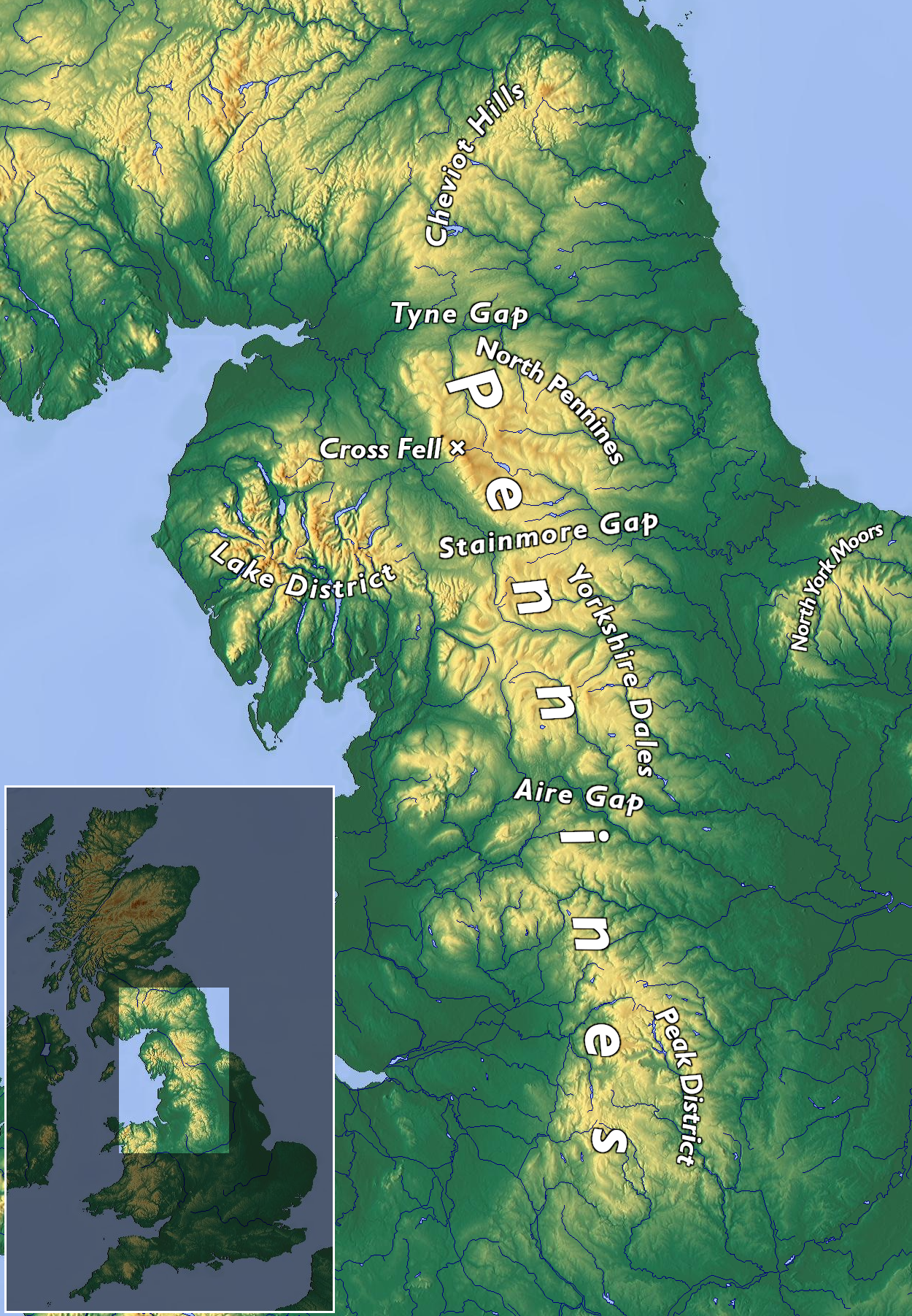|
Coalcleugh
Coalcleugh is a hamlet in Northumberland, England. It is situated in the Pennines between Penrith and Hexham. In the past it was well known as a lead mining centre. All of Coalcleugh's lead ore was smelted at Allenheads Mill at Dirtpot. At 1750ft (530m) above sea level, it is said to be the highest hamlet in England. Governance Coalcleugh is in the parliamentary constituency of Hexham Hexham ( ) is a market town and civil parishes in England, civil parish in Northumberland, England, on the south bank of the River Tyne, formed by the confluence of the North Tyne and the South Tyne at Warden, Northumberland, Warden nearby, and .... References External links Hamlets in Northumberland {{Northumberland-geo-stub ... [...More Info...] [...Related Items...] OR: [Wikipedia] [Google] [Baidu] |
Northumberland County Council
Northumberland County Council is a unitary authority in North East England. The population of the non-metropolitan unitary authority at the 2011 census was 316,028. History It was formed in 1889 as the council for the administrative county of Northumberland. The city of Newcastle upon Tyne was a county borough independent from the county council, although the county council had its meeting place at Moot Hall, Newcastle upon Tyne, Moot Hall in the city. Tynemouth subsequently also became a county borough in 1904, removing it from the administrative county. The county was further reformed in 1974, becoming a non-metropolitan county and ceding further territory around the Newcastle conurbation to the new metropolitan county of Tyne and Wear. As part of the 2009 structural changes to local government in England it became a unitary authority with the same boundaries, this disregarded the referendum held in 2005 in which the population voted against the forming of a unitary authority. ... [...More Info...] [...Related Items...] OR: [Wikipedia] [Google] [Baidu] |
Northumberland
Northumberland () is a county in Northern England, one of two counties in England which border with Scotland. Notable landmarks in the county include Alnwick Castle, Bamburgh Castle, Hadrian's Wall and Hexham Abbey. It is bordered by land on three sides; by the Scottish Borders region to the north, County Durham and Tyne and Wear to the south, and Cumbria to the west. The fourth side is the North Sea, with a stretch of coastline to the east. A predominantly rural county with a landscape of moorland and farmland, a large area is part of Northumberland National Park. The area has been the site of a number of historic battles with Scotland. Name The name of Northumberland is recorded as ''norð hẏmbra land'' in the Anglo-Saxon Chronicle, meaning "the land north of the Humber". The name of the kingdom of ''Northumbria'' derives from the Old English meaning "the people or province north of the Humber", as opposed to the people south of the Humber Estuary. History ... [...More Info...] [...Related Items...] OR: [Wikipedia] [Google] [Baidu] |
Hexham (UK Parliament Constituency)
Hexham is a constituency in Northumberland represented in the House of Commons of the UK Parliament since 2010 by Guy Opperman, a Conservative. As with all constituencies, the constituency elects one Member of Parliament (MP) by the first past the post system of election at least every five years. The seat was created as one of four single member divisions of the county of Northumberland under the Redistribution of Seats Act 1885. Constituency profile The second-largest constituency by land area in England (covering 250,992 hectares), Hexham reaches to the Pennines and is traversed by Hadrian's Wall, which runs almost due east–west through England. It includes substantial agricultural holdings, forestry, wood processing, food, minerals, and manufactured hardware industries. In the midst of the northwest of the constituency is Kielder Water; running between this area and the middle of the seat is the southern portion of Kielder Forest, and in the west, the attractions of the ... [...More Info...] [...Related Items...] OR: [Wikipedia] [Google] [Baidu] |
Pennines
The Pennines (), also known as the Pennine Chain or Pennine Hills, are a range of uplands running between three regions of Northern England: North West England on the west, North East England and Yorkshire and the Humber on the east. Commonly described as the "backbone of England", the range stretches northwards from the Peak District at the southern end, through the South Pennines, Yorkshire Dales and North Pennines to the Tyne Gap, which separates the range from the Border Moors and Cheviot Hills across the Anglo-Scottish border, although some definitions include them. South of the Aire Gap is a western spur into east Lancashire, comprising the Rossendale Fells, West Pennine Moors and the Bowland Fells in North Lancashire. The Howgill Fells and Orton Fells in Cumbria are sometimes considered to be Pennine spurs to the west of the range. The Pennines are an important water catchment area with numerous reservoirs in the head streams of the river valleys. The North Pennin ... [...More Info...] [...Related Items...] OR: [Wikipedia] [Google] [Baidu] |
Penrith, Cumbria
Penrith (, , ) is a market town and civil parish in the county of Cumbria, England, about south of Carlisle. It is less than outside the Lake District, Lake District National Park, in between the Rivers River Petteril, Petteril and River Eamont, Eamont and just north of the River Lowther. It had a population of 15,181 at the 2011 Census. Historic counties of England, Historically in Cumberland, Penrith's current local authority, local authorities are the Eden, Cumbria, Eden District Council, which is based in the town, and Cumbria County Council. In 2023, Penrith will become part of the Westmorland and Furness unitary authority area. From 1974 to 2015, it was an unparished area with no local council. A civil parish was reintroduced as Penrith Town Council and first elected on 7 May 2015. Toponymy The etymology of "Penrith" has been debated. Several writers argue for the Cumbric or Welsh language, Welsh "head, chief, end" (both noun and adjective) with the Cumbric , Wels ... [...More Info...] [...Related Items...] OR: [Wikipedia] [Google] [Baidu] |
Hexham
Hexham ( ) is a market town and civil parishes in England, civil parish in Northumberland, England, on the south bank of the River Tyne, formed by the confluence of the North Tyne and the South Tyne at Warden, Northumberland, Warden nearby, and close to Hadrian's Wall. Hexham was the administrative centre for the Tynedale district from 1974 to 2009. In 2011, it had a population of 13,097. Smaller towns and villages around Hexham include Corbridge, Riding Mill, Stocksfield and Wylam to the east, Acomb, Northumberland, Acomb and Bellingham, Northumberland, Bellingham to the north, Allendale, Northumberland, Allendale to the south and Haydon Bridge, Bardon Mill and Haltwhistle to the west. Newcastle upon Tyne is to the east and Carlisle to the west. History Hexham Abbey originated as a monastery founded by Wilfrid in 674. The crypt of the original monastery survives, and incorporates many stones taken from nearby Roman ruins, probably Coria (Corbridge), Corbridge or Hadrian's ... [...More Info...] [...Related Items...] OR: [Wikipedia] [Google] [Baidu] |
Allenheads
Allenheads is a former mining village in the Pennines to the north of Weardale in Northumberland, England. Lead extraction was the settlement's industry until the mine closed in the late 19th century. Allenheads, which is above sea level, is situated further along the River East Allen from Allendale. History The settlement was founded around lead mining. The first mine to open in the area was in the 1880s. It soon became a leading lead mines in the Northern Dales. However, within two decades of opening, it was closed in 1896 devastating the local community. In 1970s, the mine was briefly reopened by British Steel Corporation as the Beaumont Mine in the 1970s to extract Fluorspar. However, the venture was not a success as it proved cheaper to source the Fluorite elsewhere. The local economy is now dependent on agriculture and tourism. The village currently has a café, a contemporary Arts centre, and inn. An industrial heritage centre chronicling the local mining industry h ... [...More Info...] [...Related Items...] OR: [Wikipedia] [Google] [Baidu] |
House Of Commons Of The United Kingdom
The House of Commons is the lower house of the Parliament of the United Kingdom. Like the upper house, the House of Lords, it meets in the Palace of Westminster in London, England. The House of Commons is an elected body consisting of 650 members known as members of Parliament (MPs). MPs are elected to represent constituencies by the first-past-the-post system and hold their seats until Parliament is dissolved. The House of Commons of England started to evolve in the 13th and 14th centuries. In 1707 it became the House of Commons of Great Britain after the political union with Scotland, and from 1800 it also became the House of Commons for Ireland after the political union of Great Britain and Ireland. In 1922, the body became the House of Commons of the United Kingdom of Great Britain and Northern Ireland after the independence of the Irish Free State. Under the Parliament Acts 1911 and 1949, the Lords' power to reject legislation was reduced to a delaying power. The g ... [...More Info...] [...Related Items...] OR: [Wikipedia] [Google] [Baidu] |




